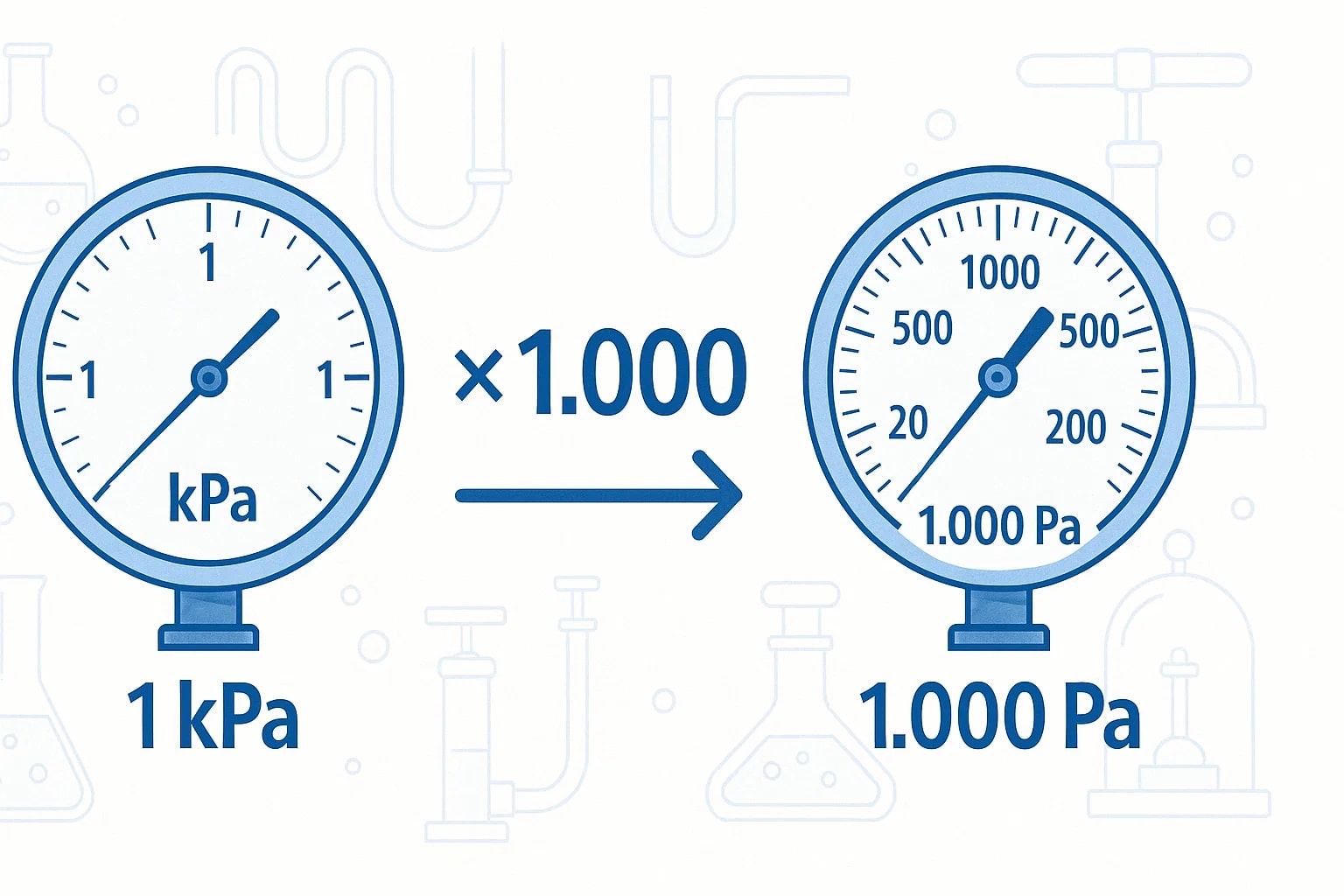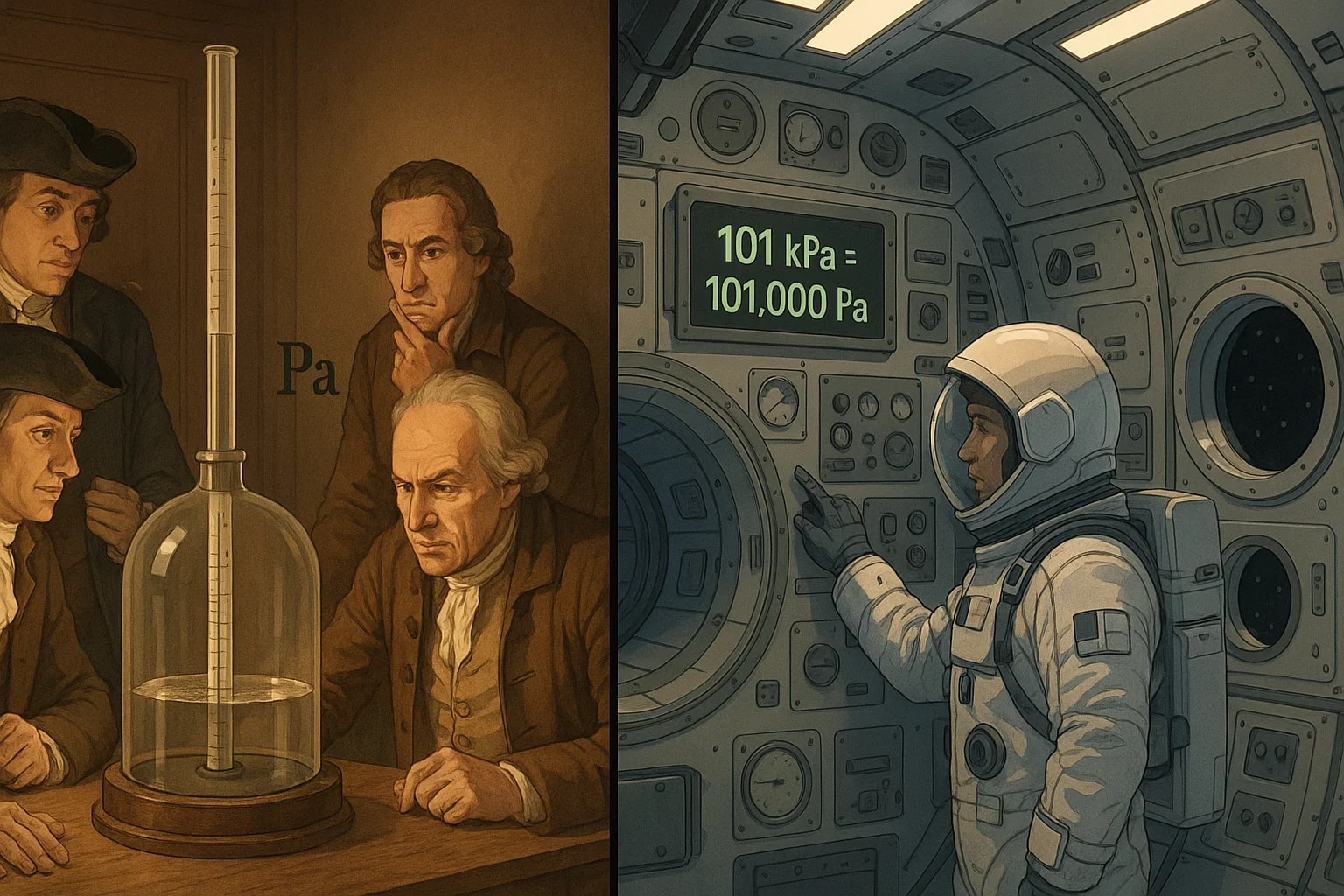kilopascal to pascal - How to convert kPa to Pa
When it comes to pressure measurement, precision is everything. In science, engineering, and meteorology, pressure is often measured in pascal (Pa), the SI base unit. However, in practical use, the kilopascal (kPa) is more common because it avoids extremely large numbers. Converting from kilopascal to pascal (kPa to Pa) is simple but crucial when working with accurate data.
What is a pascal (Pa)?
The pascal is the SI unit of pressure, defined as one newton per square meter (N/m²). Named after the French mathematician and physicist Blaise Pascal, it represents a very small unit. For example, atmospheric pressure at sea level is about 101,325 Pa.
What is a kilopascal (kPa)?
The kilopascal is equal to 1,000 pascals. It’s commonly used in meteorology, building engineering, and fluid mechanics. Because it is more practical than working with large numbers in Pa, most weather reports and tire pressure measurements prefer kPa.
Conversion formula kPa to Pa
The formula to convert kilopascal to pascal is straightforward:
1 kPa = 1,000 Pa
So, to convert kPa to Pa, multiply the value in kilopascal by 1,000. For example:
-
1 kPa × 1,000 = 1,000 Pa -
10 kPa × 1,000 = 10,000 Pa -
101.3 kPa × 1,000 = 101,300 Pa
This makes the conversion not only easy to calculate but also vital when comparing results in experiments or technical applications.

Did you know?
-
Pa in physics: The pascal is so small that everyday atmospheric pressure is over 100,000 Pa. That’s why larger multiples like kPa or even MPa are preferred in practice.
-
kPa in weather: Meteorologists often describe pressure in kilopascal, where average sea-level pressure is around 101.3 kPa. This makes weather data easier to read and interpret.
-
Pa in medicine: Medical devices like ventilators often measure air pressure in pascal, since even small changes can significantly affect breathing support.
-
kPa in construction: Building engineers use kilopascal when calculating the load-bearing capacity of soils. For example, clay might support 75–150 kPa, while dense gravel can exceed 600 kPa.
From labs to the atmosphere: why kPa to Pa matters
In scientific history, precision in pressure measurement has shaped discoveries. A notable example comes from early vacuum experiments in physics laboratories. Researchers working with near-vacuum conditions had to rely on measurements in pascal, since kilopascal would be too coarse to capture the tiny differences in pressure.
For instance, experiments on gas behavior at low pressure—building upon Boyle’s Law—required detailed measurements expressed in Pa. The difference between 10 Pa and 50 Pa could change the outcome of the study. Over time, this careful measurement helped scientists design equipment for space exploration, where cabin pressure is often maintained around 101 kPa (101,000 Pa), close to Earth’s atmosphere.
The story of these experiments shows why the ability to convert kPa to Pa is more than a calculation—it’s a bridge between practical units and fundamental science.

The hidden role of kPa to Pa in our world
The conversion from kilopascal to pascal (kPa to Pa) is direct: just multiply by 1,000. Yet this simple relationship underpins everything from weather forecasts to medical devices and even the design of spacecraft.
For quick and accurate results, try our Conversion Tools. If you often deal with pressure values, the Pressure Converter is especially useful.
From the lab bench to the atmosphere and even into outer space, pressure is measured, compared, and converted. Knowing how to convert kPa to Pa keeps science, engineering, and daily life running with precision.

